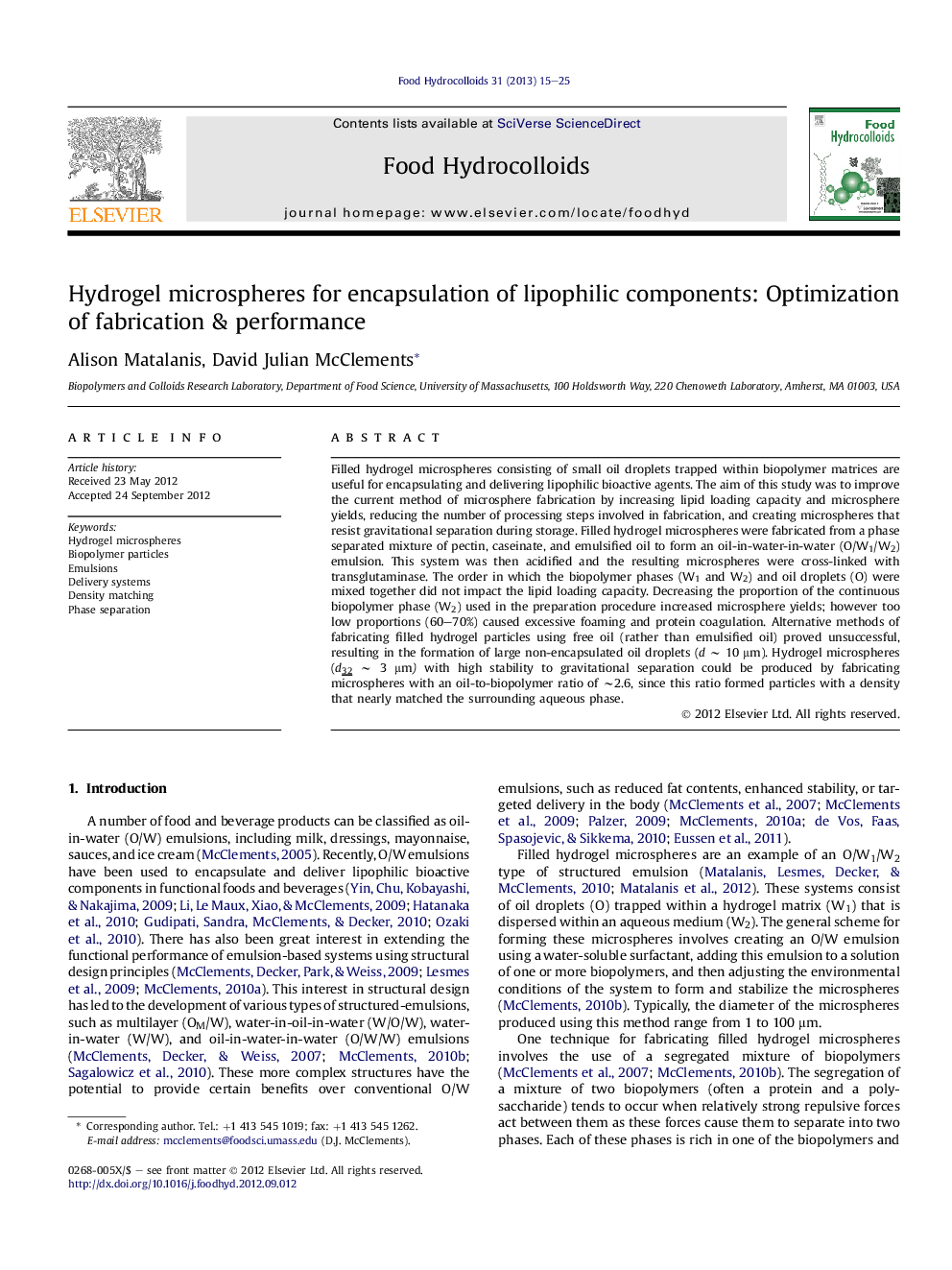| Article ID | Journal | Published Year | Pages | File Type |
|---|---|---|---|---|
| 605545 | Food Hydrocolloids | 2013 | 11 Pages |
Filled hydrogel microspheres consisting of small oil droplets trapped within biopolymer matrices are useful for encapsulating and delivering lipophilic bioactive agents. The aim of this study was to improve the current method of microsphere fabrication by increasing lipid loading capacity and microsphere yields, reducing the number of processing steps involved in fabrication, and creating microspheres that resist gravitational separation during storage. Filled hydrogel microspheres were fabricated from a phase separated mixture of pectin, caseinate, and emulsified oil to form an oil-in-water-in-water (O/W1/W2) emulsion. This system was then acidified and the resulting microspheres were cross-linked with transglutaminase. The order in which the biopolymer phases (W1 and W2) and oil droplets (O) were mixed together did not impact the lipid loading capacity. Decreasing the proportion of the continuous biopolymer phase (W2) used in the preparation procedure increased microsphere yields; however too low proportions (60–70%) caused excessive foaming and protein coagulation. Alternative methods of fabricating filled hydrogel particles using free oil (rather than emulsified oil) proved unsuccessful, resulting in the formation of large non-encapsulated oil droplets (d ∼ 10 μm). Hydrogel microspheres (d32 ∼ 3 μm) with high stability to gravitational separation could be produced by fabricating microspheres with an oil-to-biopolymer ratio of ∼2.6, since this ratio formed particles with a density that nearly matched the surrounding aqueous phase.
Graphical abstractFigure optionsDownload full-size imageDownload as PowerPoint slideHighlights► Filled hydrogel microspheres entrap lipophilic bioactives in a biopolymer matrix. ► This work was an optimization study for fabricating filled hydrogel microspheres. ► Mixing order of biopolymers and O/W emulsion did not affect lipid loading capacity. ► Replacing emulsified oil with free oil resulted in a loss of microsphere structure. ► Density-matching of microspheres by adjusting biopolymer/oil ratio was demonstrated.
